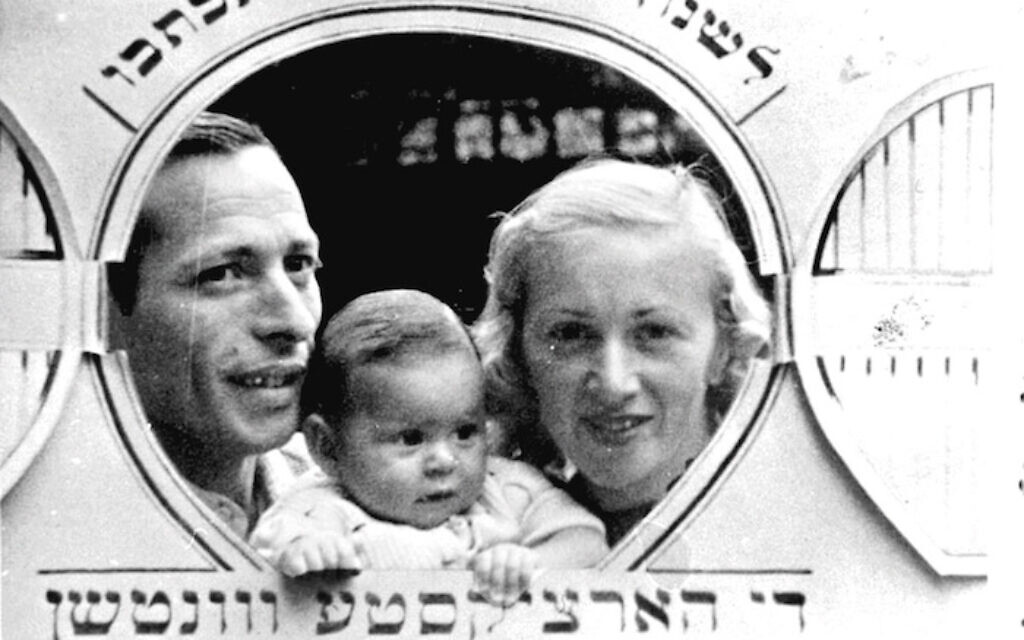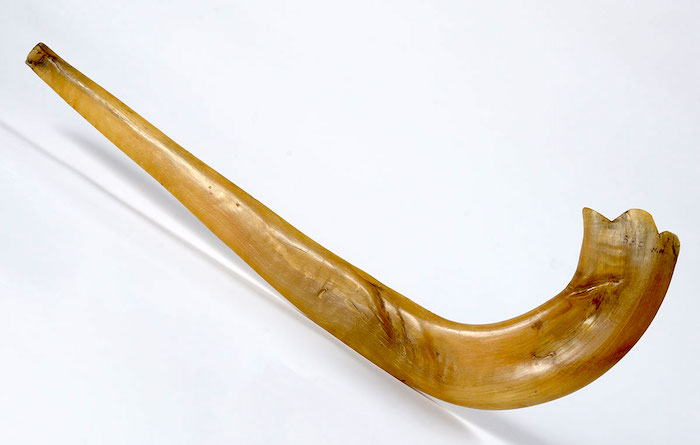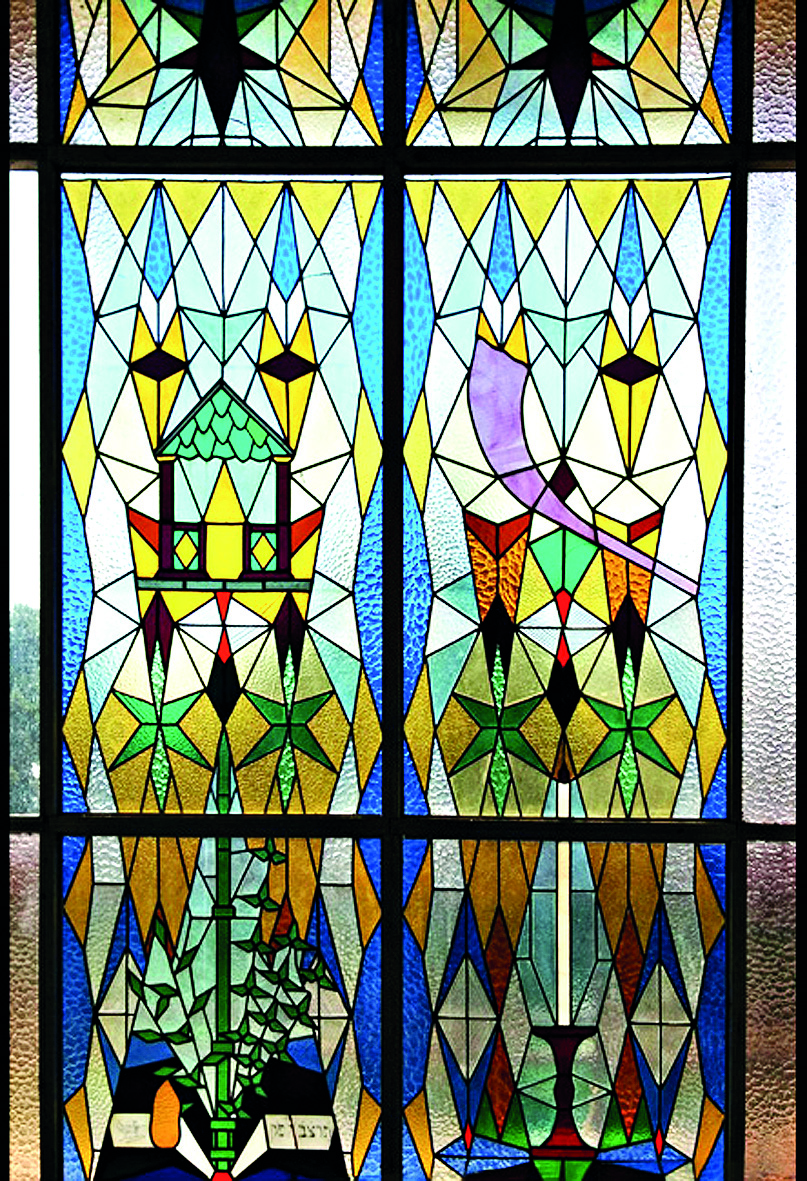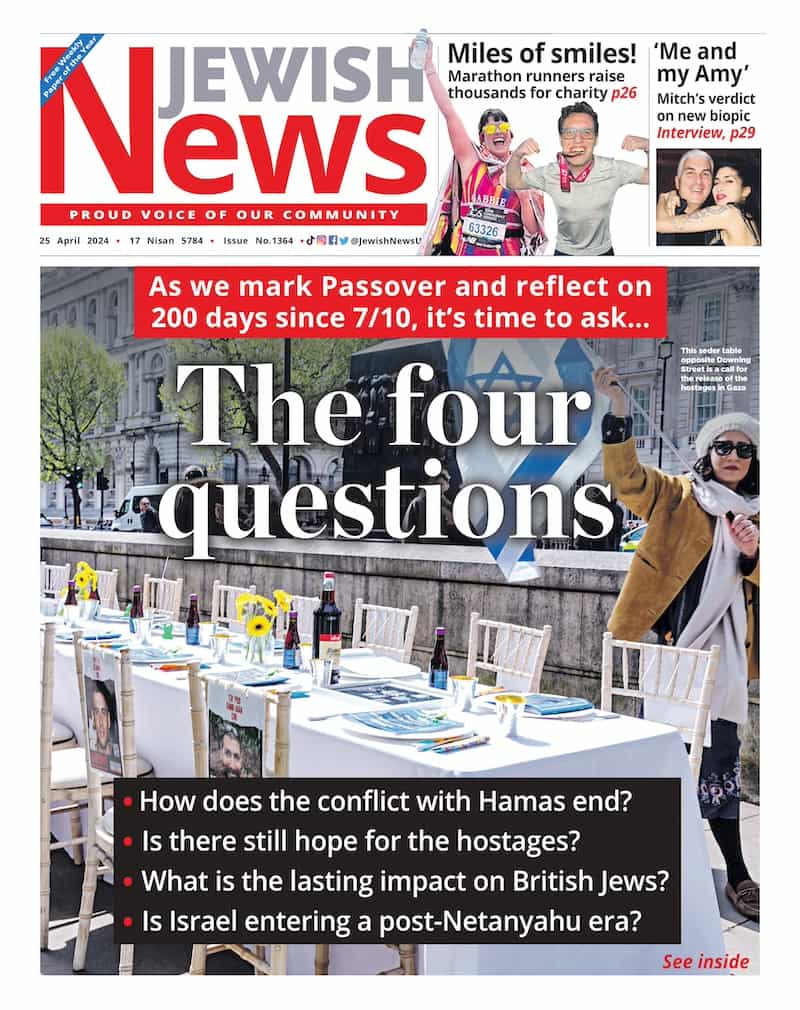Rosh Hashanahs of the Holocaust recalled by Yad Vashem
Online exhibition of Shoah-era items include New Year cards made in Bergen-Belsen and stained-glass windows in Holland synagogue, saved from destruction

Each year, Yad Vashem opens an on-line exhibition of Holocaust-era artefacts related to Rosh Hashana and Yom Kippur, with stories drawn from its archives.
This year the stories range from the heartbreaking to the redemptive. Jewish News is highlighting two, both of which relate to the Netherlands.
Simon Dasberg and his wife Isabella lived in Groningen, in the Netherlands, where Simon served as the community rabbi. They had four children — Fanny (Zipporah), Dina, Samuel and Rafael.
Get The Jewish News Daily Edition by email and never miss our top stories Free Sign Up
In 1943, the Dasbergs were deported to Westerbork and from there to the “star camp” in Bergen-Belsen. Rabbi Dasberg took a sefer Torah with him, which briefly allowed him to read from it for services and even guide barmitzvah boys in the camp.
In preparation for Rosh Hashanah 5705 (September 1944), the Dasberg children made “Shana Tova” cards in Bergen-Belsen.
They drew the symbols of the holiday – the shofar and the apple dipped in honey, decorated the cards with bright colours, and wished their parents a better year than the one they had just lived through.
Rafael, the youngest, aged eight, wrote (in Dutch): “This year I will be a very good boy, and I will never cry”.

But that year Rabbi Dasberg, his wife Isabella, and Rafael were murdered in the camp.
The three elder children survived and emigrated to Israel after liberation. The Rosh Hashana cards were brought to Yad Vashem by the eldest, Fanny Stahl, nee Dasberg, and photographed for the archives.
In contrast to the sadness of the Dasberg cards, Yad Vashem also features the story of the Van Oosten stained glass windows.
The High Holy Days-themed windows were designed by a talented Dutch Jewish architect, Abraham van Oosten, for the synagogue in Assen, in the north-eastern Netherlands, where he and his family lived.

The windows were completed and installed in 1932. Five years later, van Oosten died, aged only 40. His widow, Heintje, and their three children, Gonda, Leo and Johanna, remained in the town.
In 1940, the Germans occupied Holland. Leo van Oosten was arrested and deported to Auschwitz, where he was murdered. In October 1942, the Jews of Assen, including Heintje and her daughters, Gonda and Johanna, were rounded up and deported to the Westerbork transit camp.
In Westerbork, Gonda married Asher Gerlich, a Zionist pioneer. In 1944, the couple was deported to the Bergen Belsen concentration camp. Gonda’s mother, Heintje, and younger sister, Johanna, were sent to Auschwitz, where they were murdered.
Gonda, the sole survivor of the Van Oosten family, changed her first name to Tamar and in 1946, together with Asher, emigrated to Israel. The couple, now Tamar and Asher Ben Gera, joined a group of young Palmach pioneers and established Kibbutz Beit Keshet in the lower Galilee. They had seven children.
Most of the Jews of Assen did not survive the Holocaust. A few returned, but they were not able to re-establish a Jewish community and the synagogue was never reopened. The building was eventually purchased by the local Protestant community and converted into a church.
In 1974, Tamar learned that the former Assen synagogue was to be demolished. She decided to save the stained-glass windows her father had designed, and bring them to Israel. For a time they were installed in the renovated dining hall of Kibbutz Beit Keshet; but as it became clear that the dining hall was no longer the central meeting place of the kibbutz, Tamar asked Yad Vashem for help in preserving the windows for posterity.
Today the van Oosten windows are part of Yad Vashem’s Artefacts Collection, a memorial to a Jewish community which no longer exists, but which celebrates the work of Abraham van Oosten and the High Holy Days.

Thank you for helping to make Jewish News the leading source of news and opinion for the UK Jewish community. Today we're asking for your invaluable help to continue putting our community first in everything we do.
For as little as £5 a month you can help sustain the vital work we do in celebrating and standing up for Jewish life in Britain.
Jewish News holds our community together and keeps us connected. Like a synagogue, it’s where people turn to feel part of something bigger. It also proudly shows the rest of Britain the vibrancy and rich culture of modern Jewish life.
You can make a quick and easy one-off or monthly contribution of £5, £10, £20 or any other sum you’re comfortable with.
100% of your donation will help us continue celebrating our community, in all its dynamic diversity...
Engaging
Being a community platform means so much more than producing a newspaper and website. One of our proudest roles is media partnering with our invaluable charities to amplify the outstanding work they do to help us all.
Celebrating
There’s no shortage of oys in the world but Jewish News takes every opportunity to celebrate the joys too, through projects like Night of Heroes, 40 Under 40 and other compelling countdowns that make the community kvell with pride.
Pioneering
In the first collaboration between media outlets from different faiths, Jewish News worked with British Muslim TV and Church Times to produce a list of young activists leading the way on interfaith understanding.
Campaigning
Royal Mail issued a stamp honouring Holocaust hero Sir Nicholas Winton after a Jewish News campaign attracted more than 100,000 backers. Jewish Newsalso produces special editions of the paper highlighting pressing issues including mental health and Holocaust remembrance.
Easy access
In an age when news is readily accessible, Jewish News provides high-quality content free online and offline, removing any financial barriers to connecting people.
Voice of our community to wider society
The Jewish News team regularly appears on TV, radio and on the pages of the national press to comment on stories about the Jewish community. Easy access to the paper on the streets of London also means Jewish News provides an invaluable window into the community for the country at large.
We hope you agree all this is worth preserving.
-
By Brigit Grant
-
By Laurent Vaughan - Senior Associate (Bishop & Sewell Solicitors)
-
By Laurent Vaughan - Senior Associate (Bishop & Sewell Solicitors)
-
By Laurent Vaughan - Senior Associate (Bishop & Sewell Solicitors)
-
By Laurent Vaughan - Senior Associate (Bishop & Sewell Solicitors)





















